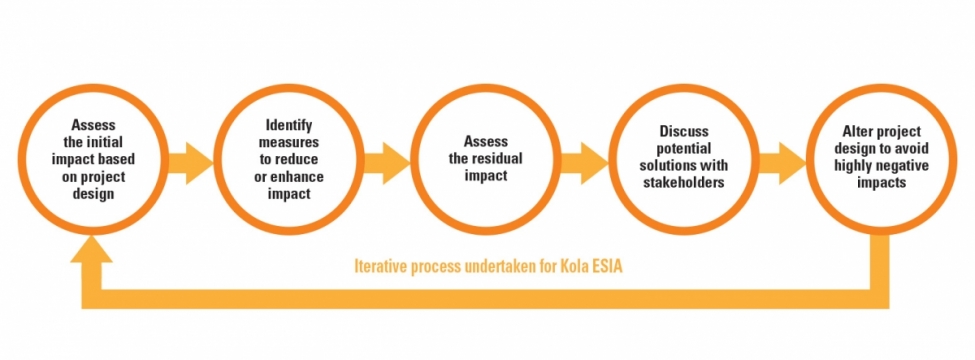To serve you better, our new website displays information specific to your location.
Please visit the site and bookmark it for future use.
You are here
SRK Kazakhstan ›Effective use of the ESIA process to identify sustainable mining solutions
|
Download A4 | Letter |
SRK News | Issue 59:
Environmental & Social Services
Habitat loss in the Republic of Congo (Congo) from subsistence agriculture, logging and charcoal making has led to a decline in biodiversity of tropical rainforests. Add the challenges of a growing population, climate change and a struggling economy. SRK has undertaken an environmental and social impact assessment (ESIA) of the proposed Kola Potash Mine in a sensitive location in the Congo, between two protected areas, a national park and a nature reserve.
Kore Potash recognised the area’s ecological importance and the requirement for detailed biodiversity baseline and impact assessment for the ESIA and wider project design. SRK worked with the client, project engineers, local and international non-governmental organisations (NGOs) and other stakeholders to identify means to avoid and reduce potential negative impacts on habitats and protected fauna. Among the questions addressed were ‘how can an elephant safely cross a conveyor belt?’ and ‘should the construction schedule reflect turtle nesting periods?’.
The ESIA created a platform and cyclical process (see figure) for all of these parties to think outside the box and share ideas.
Many innovative approaches were identified through the ESIA process, including:
-
The overland conveyor belt carrying ore from the mine runs 35 km to the processing plant. Elevating the belt at two key locations, above known elephant migratory routes, creates ‘animal underpasses’. These underpasses have noise insulating hooding, silent rollers and allow sufficient clearance for the largest mammals to not feel enclosed.
-
This would be the first use of a conveyor belt as an elephant underpass in a tropical habitat. Although animals can migrate freely, the remainder of the 35 km fenced conveyor corridor may deter poachers and illegal loggers from entering the national park.
-
Renatura, a turtle conservation group, participated throughout the process will operate a turtle hatchling, nest and egg relocation program during construction to minimise the impact on turtles. Renatura operates in partnership with local communities, providing an indirect income source during the project in the conservation sector.
-
A 2-nautical mile exclusion zone will prevent illegal fishing trawlers from operating in the area. This, in addition to the national park marine exclusion zone, will provide a crucial habitat for fish and the critically endangered Atlantic humpback dolphin. Community fishing boats will not be affected by the exclusion zone and will hopefully benefit from the improved fish stocks.
-
Bubble curtains will be used during pile driving the steel piles required to construct the jetty and breakwater. This curtain will deter the Atlantic humpback dolphin and turtle species from entering construction zones. As part of this initiative, trained marine mammal observers will notify construction teams if species are observed within a defined radius of construction activities and all work will be stopped until the mammals clear the area. Monitoring technology will be used throughout construction and operation phases to record the number and behaviour of these critically endangered species, contributing crucial knowledge to the wider scientific community.
-
Planting a forested corridor along the conveyor belt comprised of local fruit tree and shrub species will link isolated forest patches in the savanna dominated habitat. This will be essential for bird species and encourage animals to use the underpass routes but will also benefit communities who can maintain the corridor and utilise the produce to supplement their diets.
When implemented holistically, it is hoped these measures will halt the current habitat degradation and potentially improve the overall biodiversity of the area. This process fostered a productive and supportive relationship between Kore Potash and their stakeholders.
Effective ESIA management therefore played a key role in linking conscientious clients, open minded engineers and interested communities and NGOs to resolve difficult challenges with innovative and often mutually beneficial outcomes. Kore now has a unique opportunity to contribute to environmental conservation in the project area, with a vision to becoming the first sustainable mine in the Congo.
Alice Davies: adavies@srk.co.uk


